Feature
A Century of Research Partnerships
CALS scientists are furthering the success and legacy of the Wisconsin Alumni Research Foundation 100 years after its founding.
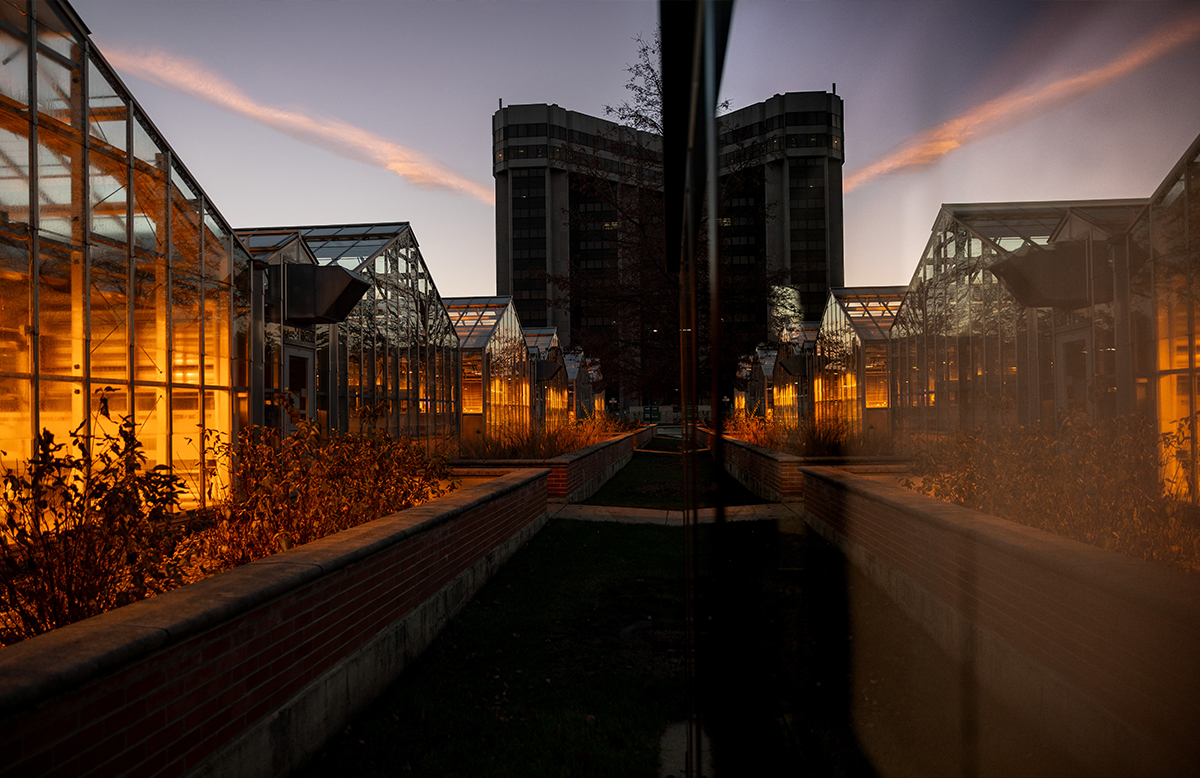
Hector DeLuca left his mark on the UW–Madison campus — literally. The professor emerit and former chair of biochemistry has three buildings that bear his name, recognition of his many research and teaching contributions. His work on vitamin D led to chemical synthesis of vitamin analogs that have been used to treat diseases such as kidney failure, rickets, and osteoporosis. He is listed as an inventor on almost 2,000 patents and founded three biotechnology companies, including Tetrionics, a pharmaceutical ingredients manufacturer acquired by the chemical company Sigma-Aldrich in 2004.

Federal funding helped lay the foundation for DeLuca’s many discoveries. During his career, he secured $16.7 million in federal grants through his research. Those funds came from agencies such as the National Institutes of Health (NIH) and paved the way for his inventions.
But, to bring his innovations to the public, DeLuca had another important partner — the Wisconsin Alumni Research Foundation (WARF). WARF is the designated patenting and licensing organization of UW–Madison and was created to ensure university research helps solve problems on and beyond campus. The foundation gives much of the funding earned from licensing back to UW — tens of millions of dollars from DeLuca’s technologies alone — to support the cycle of further discovery. WARF is celebrating its 100th anniversary this year and reflecting on a century of helping many researchers, including DeLuca, contribute to the university, the community, and the world.
WARF’s Origins in CALS
WARF itself wouldn’t exist without another CALS professor of biochemistry, Harry Steenbock. In the early 1920s, Steenbock discovered that certain fats could be fortified with vitamin D by exposing them to UV light. He understood the impact this finding could have on public health and patented the discovery.
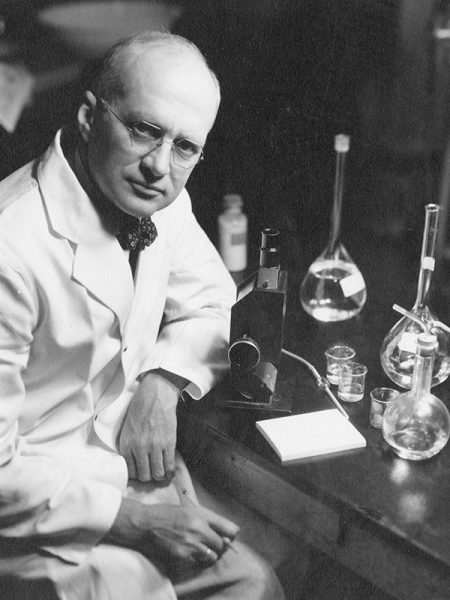
WISCONSIN–MADISON ARCHIVES
But, when faced with a commercial offer, he chose not to sell it for profit. Instead, he wanted to find a way to bring earnings from the discovery back to the university. Steenbock partnered with Harry L. Russell, dean of CALS, and Charles S. Slichter, dean of the Graduate School, to develop the idea for a nonprofit, alumni-run corporation that would manage the UW’s patents and reinvest the revenue in the university. That idea became WARF, founded in 1925.
Throughout the last 100 years, WARF has evolved and differentiated to support research at different stages through targeted programs. WARF Accelerator supplies resources for inventors and advances them closer to the marketplace. WARF Ventures provides funding to early-stage startups that are commercializing UW technologies. And WARF Therapeutics creates a translational research path to improve the value of potential drugs and medicines in the eyes of investors and research partners.
Each program houses additional opportunities. For example, WARF Named Professorships recognize UW–Madison faculty who make major contributions to research, teaching, and service. The Kellett Mid-Career Awards and H.I. Romnes Faculty Fellowships support faculty who have made key research discoveries. The Fall Research Competition funds cutting-edge investigations carried out by more than 400 faculty throughout the university.
“WARF’s programs bridge the gap between federal funding and private investments,” explains Emily Bauer, director of licensing at WARF. “The work we do in intellectual property and the resources we provide can help research projects move from discovery to proof of concept to business modeling and beyond.”
CALS and UW–Madison secure large amounts of funding for discovery and early-stage research from federal agencies. In 2023–24, the university was awarded $816.8 million in federal research money. Those funds, from agencies such as the Department of Energy (DOE), NIH, National Science Foundation, and U.S. Department of Agriculture, lay the groundwork for discoveries that turn into patentable inventions.
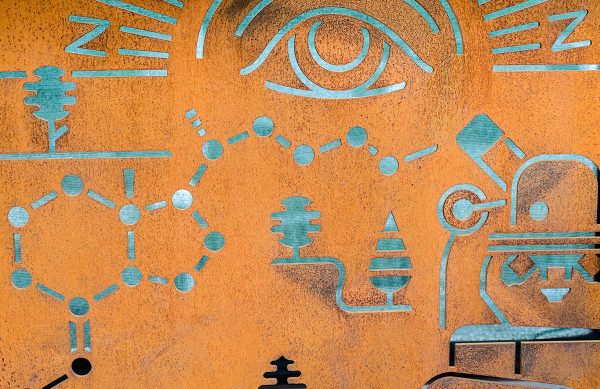
The Bayh–Dole Act helps bring these technologies to the public. Adopted in 1980, it allows universities, small businesses, and non-profit organizations to retain ownership of inventions developed with federal funding. The act was part of Congressional efforts to boost the economy at the time. Before adoption of the act, the government had accumulated more than 25,000 patents, but fewer than 5% of them were commercially licensed. WARF, however, can provide the additional funds and framework to help federal money go the extra mile and ensure that usable innovations reach the market.
“WARF patents university technologies based on federally funded research because it is a proven method for getting the innovations out to the world. Government funding supports the basic research but usually not the commercial development,” says Kevin Walters, public affairs associate at WARF. “And by allowing university researchers to patent their technologies, discoveries and startups stay in the community. For WARF, this means Wisconsin inventors at a Wisconsin university benefit Wisconsin’s people.”

Since 1925, WARF has given UW around $4.5 billion in support and has provided funds for more than 50 campus buildings. In 2024–25, the foundation is supporting UW with $105.4 million, including $41.7 million for research projects; $38.7 million for faculty, staff, and students; and $10 million for various research facilities.
“WARF’s success is a mix of genius, creativity, and a little bit of luck,” says Walters. “It’s inspiring to walk across the CALS campus and see names like Steenbock and DeLuca, great faculty who were critical to WARF and who truly did change the world with their work.”
Given its origins in CALS, it’s no surprise that the college and WARF have a strong partnership going back a century. That relationship, and the support and funding provided by WARF, continues today. Here are some strong examples of CALS faculty — three among many (see below sidebar, “WARF Collaborators at CALS,” for more examples) — who are making advances in various research fields thanks to partnerships with WARF.
The Carbon Capturer
About five years ago, Rob Anex, professor of biological systems engineering, was looking for new research collaborations. He had studied biofuels and economic analyses of technologies throughout his career, work he has pursued with critical funding from multiple federal agencies — the Department of Energy, the U.S. Department of Agriculture, and the National Science Foundation, among others. But Anex was interested in delving further into technologies that could help address climate change. As he looked for a partner who might be interested in joining him on that path, he came across the work of Bu Wang, associate professor of civil and environmental engineering.
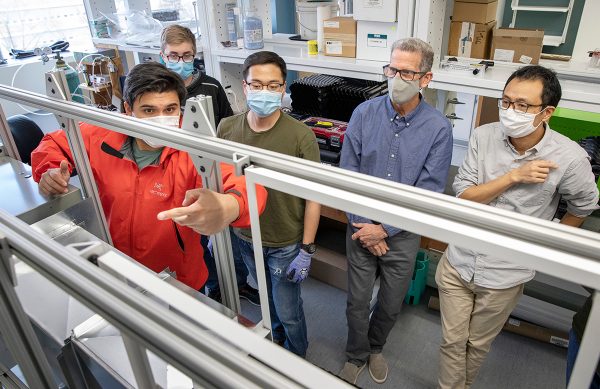
At the time, Wang was investigating industrial mineral wastes called fly ash, trying to control the pH level of the materials. He and his team realized that the calcium in fly ash rapidly carbonates when placed in a solution of sodium carbonate and forms calcite, the primary mineral in limestone. The reaction releases sodium hydroxide, which combines with carbon dioxide in the air to form more sodium carbonate; this reacts with more fly ash, a cascading effect that locks away the carbon dioxide in the ash.
“It didn’t work for what Bu was trying to do, but he realized it could work really well for doing direct air capture of carbon, getting carbon dioxide out of the air,” Anex says. “It was a great opportunity. We began writing proposals, and we entered the XPRIZE competition with this idea.”
Following their discovery, Anex, Wang, and their team formed a spin-off company and entered the 2021 XPRIZE for Carbon Removal Student Competition, supported by the Musk Foundation. As one of the winners, they received $250,000 to continue their work and grow the company.
Throughout the journey from idea to industry, Anex and Wang worked with another key collaborator — WARF. The researchers participated in several of the foundation’s “pitch days,” where entrepreneurs present their ideas to a panel of judges for feedback, and they received WARF Accelerator money to help further develop and test their technology. As their company grew, WARF provided additional funding through its Ventures program and offered other kinds of assistance.
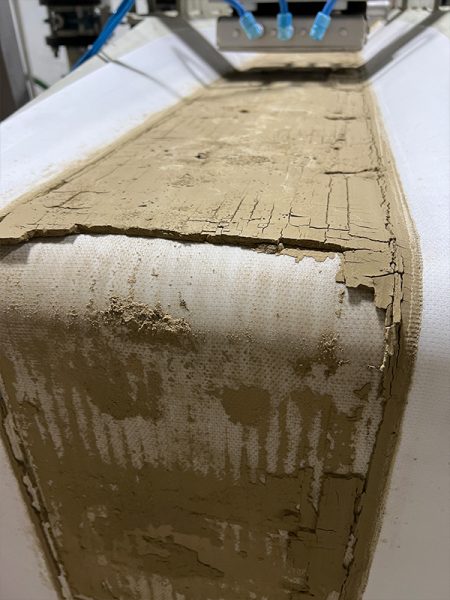
“In addition to the money, WARF has been very good about helping us meet with investors — reviewing our materials, giving us tips and advice,” Anex says. “Beyond programs like Accelerator, they provided contacts and suggestions that went a long way toward the success of this work.”
Their company, now called Alithic Carbon Solutions (previously Earth RepAIR), is finding a foothold in the carbon capture field due to its unique process. While other companies use large amounts of energy to capture carbon, Alithic uses the chemical energy of mineral wastes and locks carbon dioxide away in mineral form — all at atmospheric pressure and temperature. The process stores carbon dioxide in the fly ash by essentially turning the calcium in the ash into limestone, which can then be reused as a construction material.
Alithic is building its first pilot plant in Madison this summer and hopes to raise money for a larger pilot plant in Alabama. If that proves to run as expected, Anex and his team want to build an industrial plant capable of taking 25,000 metric tons of carbon dioxide out of the air each year, with plans beyond that for plants that could remove five times more.
While that amount of carbon dioxide is just a small slice of the more than 6 billion metric tons of carbon dioxide the U.S. releases each year, the product created by Alithic’s system (called supplementary cementitious material) could also replace up to 70% of traditional cement, the production of which creates large amounts of carbon dioxide. And the technology can be used with feedstocks beyond fly ash, such as steel slag and mine tailings and natural minerals like serpentine or basalt, which provides a lot of flexibility.
Anex is listed as an inventor on three patents for his technologies, two of them licensed by Alithic. The third patent covers a technology capable of reducing carbon dioxide emissions from industrial wastes, such as crushed concrete or coal ash. The work that led to these technologies was funded by the DOE.
“WARF has helped each step of the way and has truly created an entrepreneurial ecosystem on campus,” Anex says. “I had a startup company years ago, and it’s like night and day, the difference between what’s possible when you’re scraping for every resource and bit of advice versus what’s possible with WARF.
For the Health of Mothers
Laura Hernandez, professor of animal and dairy sciences, is concerned about the health of moms — whether they be mice, cows, or humans. Her lab studies the roles of serotonin, antidepressants, bone health, and the placenta in maternal health.
When Hernandez first came to CALS 14 years ago, she was hot on the trail of serotonin, a monoamine (which functions as a neurotransmitter or hormone) that impacts mood, sleep, appetite, and more, and its effects on calcium in cows. Cows can develop milk fever when the amount of calcium circulating in their blood decreases. However, Hernandez and her colleagues had found that when cows are given a serotonin precursor that the body metabolizes into serotonin, serotonin signaling and calcium levels rebound.
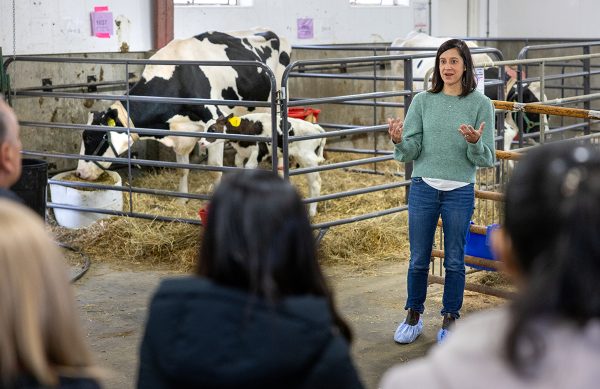
So, Hernandez became increasingly interested in selective serotonin reuptake inhibitors (or SSRIs), a common form of antidepressant. SSRIs block uptake of serotonin from the blood, resulting in increased serotonin signaling. With funding from NIH, Hernandez began investigating if there were further connections between signaling and nonbehavioral health, such as the elevated levels of calcium she had seen in cows.
“There’s been an underappreciation for the impacts of SSRIs that aren’t related to antidepressant behavior,” Hernandez says. “That’s how my work evolved. I was initially looking at lactation and bone health related to calcium, but then we started also seeing other things happen in animals on SSRIs.”
A particular observation in mice set Hernandez and graduate student Rafael Reis Domingues down another path of SSRI investigation. When mice treated with SSRIs had babies, some pups died shortly after birth. At first, the researchers thought it was a lactation problem, but then Hernandez wondered if it wasn’t something else that they weren’t expecting. They dissected some of the mice that had given birth and found that several pups were still in the uterus.
The scientists needed to decipher whether the problem was with the pups or the mother. When they treated mice with SSRIs and a drug called ketanserin, which blocks SSRI effects, they saw reduced pregnancy loss. But why? Domingues set up an experiment to test if the pregnancy losses from SSRI treatments might be due to restricted blood flow to the placenta. They found that, when mice were treated with SSRIs, blood flow to the placenta was reduced. And when ketanserin was given along with the SSRIs, blood flow was restored, as Domingues predicted.
“This was very exciting,” Hernandez says. “Rafael chose to use ketanserin because it has already been used to treat preeclampsia in women, and it’s known not to reverse the positive effects of SSRIs on behavior. So, these data have important biomedical implications and possible use in the clinic.”
WARF agreed. They helped Hernandez, Domingues, and animal and dairy sciences professor and collaborator Milo Wiltbank apply for a patent. That patent will protect the method of using ketanserin in conjunction with SSRIs to prevent adverse pregnancy outcomes. Hernandez is hoping she can secure further funding for the work through the Draper Technology Innovation Fund, a program from UW–Madison’s Discovery to Product unit that supports additional research related to WARF-patented technologies. She is also interested in the possibility of working with WARF Therapeutics to develop a plan for translational research and preclinical work.
Hernandez’s research and own experiences of motherhood have made her a staunch advocate for pregnant women and mothers. That viewpoint keeps her moving forward, even when up against the complexity of human research and doctors who are sometimes reluctant to accept research that changes the medicines they prescribe.
“I don’t want to take any options away from pregnant women and mothers. I just want to provide information,” Hernandez says. “Women need to have more information to make decisions about their health and their medications and to get the support they need. I want these discoveries to support that mission.”
Fungus Fighters
Fungal pathogens can cause devastating diseases in plants, animals, and humans, and they can be extremely difficult to eradicate. When it comes to human health, more than a billion people are estimated to become infected with a fungal pathogen each year, with effects ranging from superficial to life-threatening. White-nose syndrome of hibernating bats is caused by fungi and, since its detection in 2006, it has caused the worst mass mortality rates known in mammals, killing millions of bats. Fungal disease has also killed millions of trees in native forests, a massive loss of both habitat and natural “sinks” that remove and store atmospheric carbon dioxide.
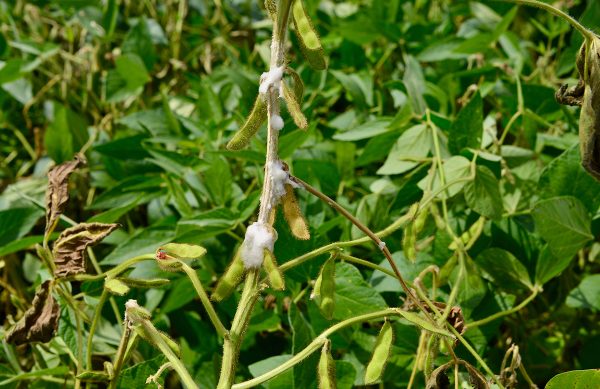
Farms also face the consequences of fungal pathogens. Sclerotinia stem rot has become a widespread threat to many crops throughout the Midwest. The disease, caused by the fungus Sclerotinia sclerotiorum, can significantly limit yields and cause losses of more than 10 million bushels per year in soybeans, a common host.
Mehdi Kabbage, professor of plant pathology, is working to decrease the threats and impacts of fungal pathogens by coming at the complex problem from different directions. First, with funding from the National Science Foundation, he studied why plants succumb to stem rot and sought to uncover the genetic traits of the plants that are resistant to the disease.
“We found that the fungal pathogen can increase the production of reactive oxygen species in its host, which causes plant cell death and gives an advantage to the pathogen,” Kabbage says. “To counteract that, we were able to identify genetic targets that slow that process and provide increased resistance to the fungus.”
Fortuitously, because reactive oxygen species also play a role in a plant’s response to drought, Kabbage and his team— including Damon Smith, professor and extension specialist in plant pathology — found that plants that resist fungal pathogens also are better at withstanding drought. Given the potential utility of such traits in the field, the researchers developed plant cells and whole plants with the resistance traits and worked with WARF to patent the inventions.
Kabbage then looked at how plants fend off fungal infections from another angle. He began working with two researchers formerly at the Wisconsin Energy Institute (WEI): scientist Jeff Piotrowski and professor emerit of biochemistry John Ralph PhD’82. With funding from the Department of Energy, Piotrowski and Ralph had identified a class of plant metabolites (small molecules involved in metabolism) called diferulates and wanted Kabbage to test them for antifungal properties.
“We tested these products of plant metabolism in the lab, and we found that a couple of them were really potent antifungal compounds,” Kabbage says. “We then moved from cell cultures and tested them in plants, and there, too, they inhibited fungal infections.”
With this discovery in hand, Kabbage, Piotrowski, and Ralph turned to WARF to patent another finding and provide the basis of what could be used to treat plants, soils, and even animals with fungal infections.
Now Kabbage and his team are working to make the antifungal compounds more readily accessible. It can be very expensive to produce the molecules, and his team has developed a process for producing the metabolites much more cheaply. While the product is not in a pure form — instead, it’s a mixture of metabolites — it’s still promising for widespread antifungal use. And with that promise comes the potential for another patent. Kabbage and his team are again working with WARF to bring this latest innovation to market.
“I’ve been so grateful to WARF and their willingness to recognize good science and get behind it,” Kabbage says. “As researchers, we can hear ‘no’ a lot of other places, but with WARF, we hear ‘yes,’ and that’s incredible. The additional funding and visibility for these discoveries is a game changer.”

WARF Collaborators at CALS
Throughout its 100 years of operation, WARF has secured around 4,400 patents on behalf of UW researchers and has bolstered the university’s budget by $4.5 billion. In addition to the researchers featured in this article, WARF continues to help many other CALS faculty members by patenting their discoveries and funding ongoing work, mainly through the WARF Accelerator program, which bridges the gap between invention and marketplace. Here are just some of the CALS faculty members whose work benefits from the continued partnership with WARF.
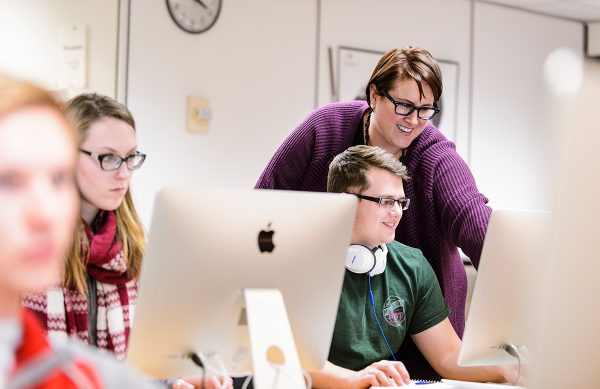
Emily Bick, assistant professor of entomology, received WARF Accelerator funding to go wireless with the Insect Eavesdropper, a cutting-edge device designed to listen to the sounds of insects feeding so farmers can track and manage pests. (See The Insect Eavesdropper, Grow, fall 2024.)
Jake Brunkard, associate professor of genetics, holds a patent for the overexpression of a protein, called NARS1, that improves plant growth and yields through activation of another protein, target of rapamycin. (See Target of Opportunity in this issue.) This method could be used with any flowering plant and in agricultural contexts.
Joao Dorea, associate professor, and Guilherme Rosa, professor, both in the Department of Animal and Dairy Sciences, hold a patent for a computer vision-based system that automates and standardizes the process of delivering feed. This method can reduce labor costs and improve feeding efficiency and cattle performance.
Jingyi Huang, associate professor, and Francisco Arriaga, professor, both in the Department of Soil and Environmental Sciences, hold a patent for a low-cost soil gas-flux measurement system with wireless battery power. Huang also holds a patent with Alfred Hartemink, professor of soil and environmental sciences, for improved systems for characterizing soil using visible-near-infrared spectroscopy. These technologies can be used to better analyze soil for a variety of purposes in the lab and field.
Jae-Hyuk Yu, professor of bacteriology, holds a patent for a sugar fermentate of edible fungi that exhibits antimicrobial activity. The cell-free fermentate, called NP for “natural preservative,” can be used as a food additive and in environmental or topical applications.
Shawn Kaeppler, professor of plant and agroecosystem sciences, holds a patent for a method of genetically manipulating hemp that is less labor-intensive and more efficient than previous methods. This technique can be used in genetic research to improve certain attributes of the plant.
Ahna Skop, professor of genetics, holds a patent for a discovery that the midbody (MB) functions as an RNA-based organelle in cells and serves as a novel means of RNA-based intercellular communication. Skop also received Accelerator funding to validate isolation of midbody remnants (MBRs) from human serum and tissue samples. MBRs have the potential to be a source of early disease detection as well as a drug delivery vehicle. (See New Target for Cancer Treatment?, Grow, spring 2024).
Victor Ujor, assistant professor of food science, holds a patent for the microbes and methods used to selectively detoxify lignocellulosic biomass. The method will remove inhibitory coproducts produced during biomanufacturing and allow successful sugar fermentation of biomass.
JP Van Pijkeren, associate professor of food science, holds a patent for a means of increasing reuterin production in bacterial strains that contain the reuterin production pathway. Reuterin is a broad-spectrum antibiotic effective against bacteria, yeasts, molds, and protozoa.
This article was posted in Bioenergy and Bioproducts, Changing Climate, Economic and Community Development, Features, Food Systems, Health and Wellness, Healthy Ecosystems, Summer 2025 and tagged animal and dairy sciences, Bayh-Dole Act, biological systems engineering, Harry Steenbock, Hector DeLuca, Laura Hernandez, Medhi Kabbage, patents, plant pathology, research funding, Rob Anex, technology licensing, Wisconsin Alumni Research Foundation (WARF).

